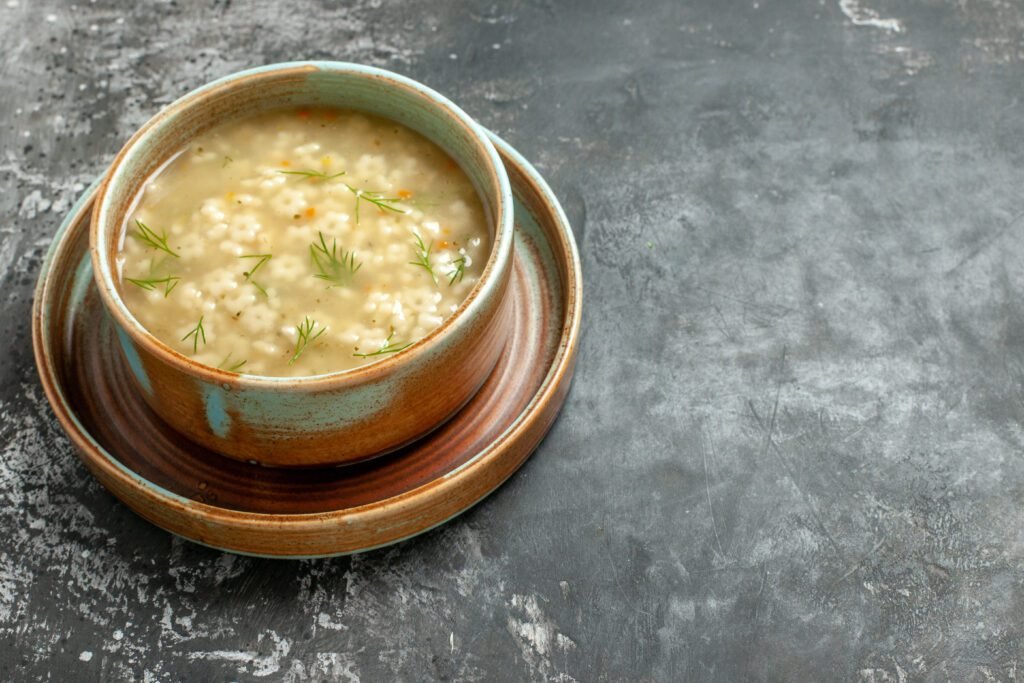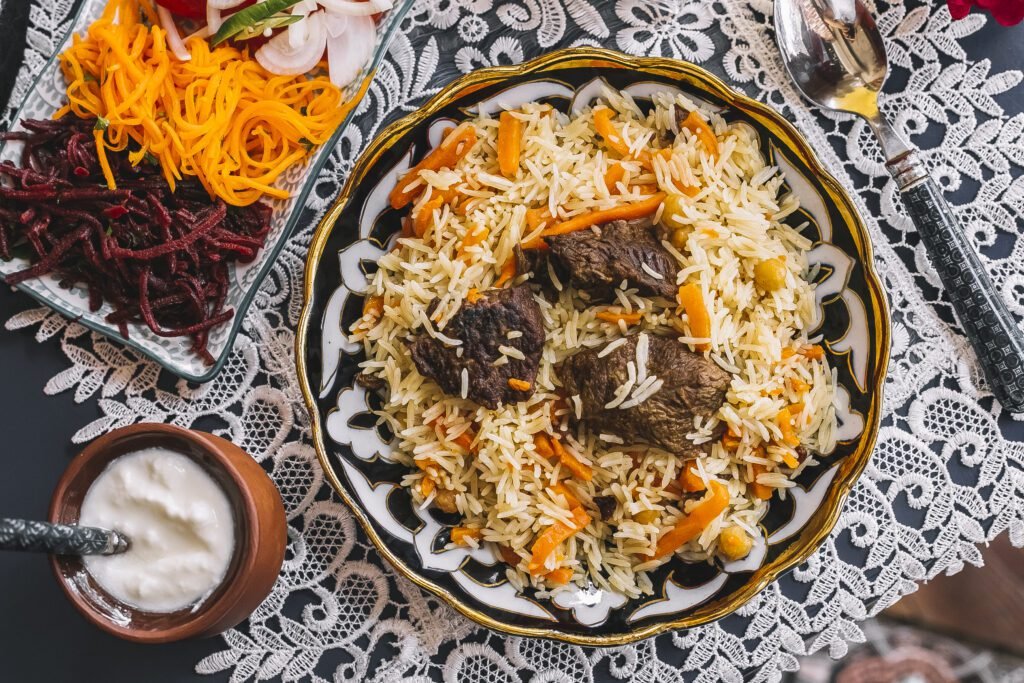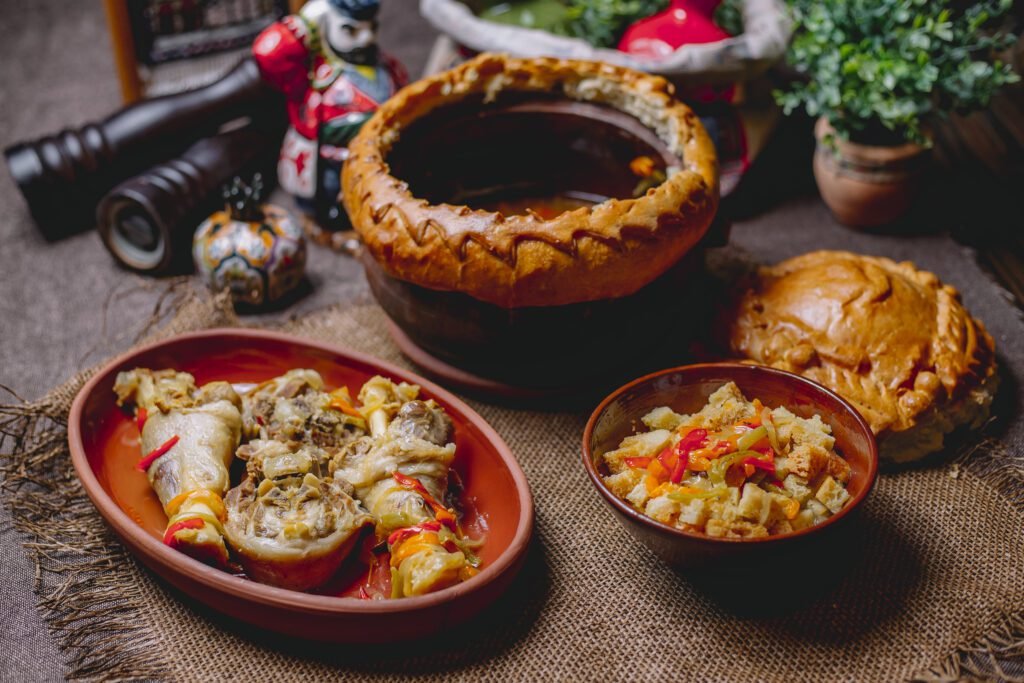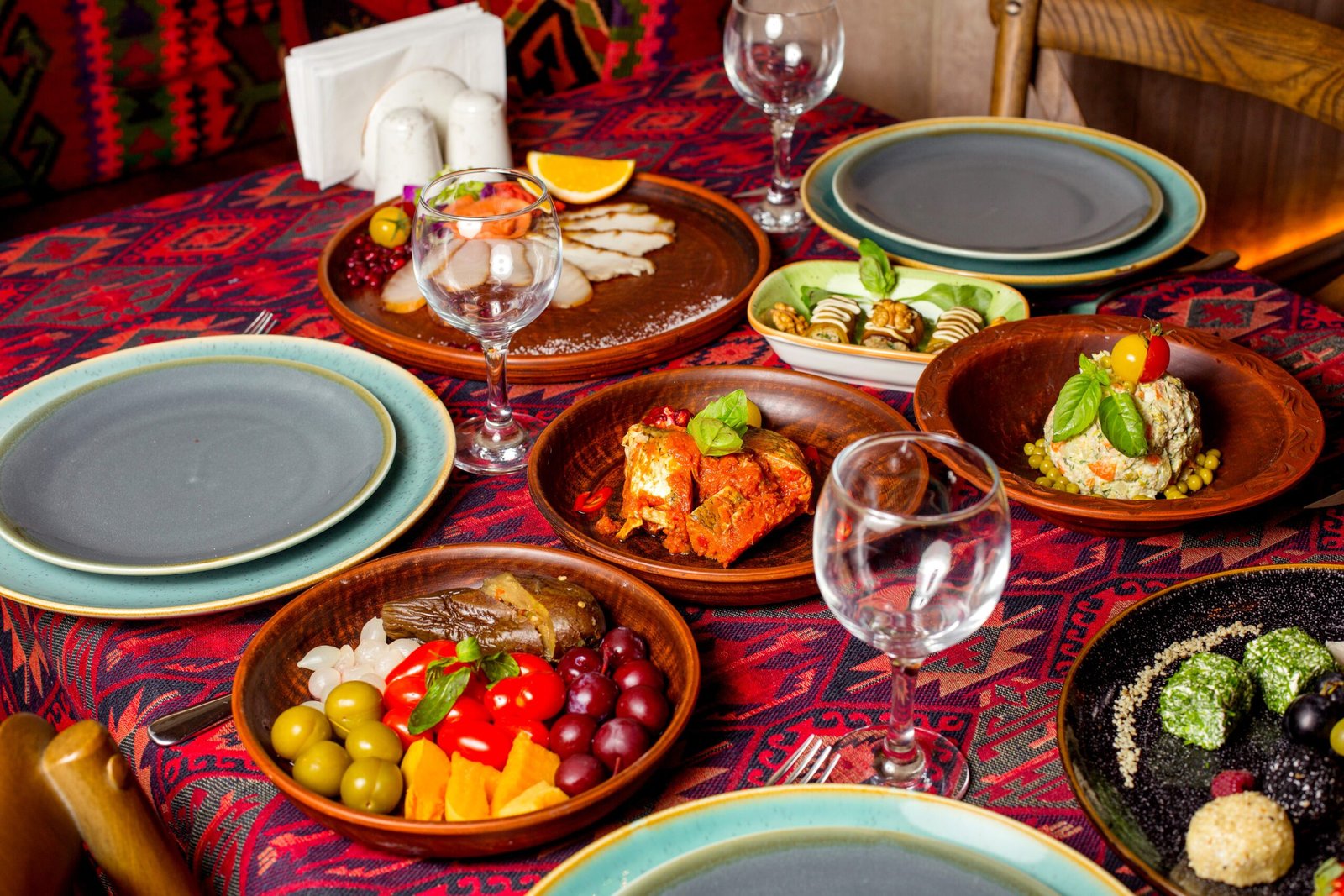Dishes of Russia: A Culinary Odyssey : Leave on a gastronomic excursion through the core of Russia as we dig into the rich embroidery of its culinary legacy. From generous stews to fragile cakes, the dishes of Russia are a demonstration of its different culture and dynamic flavors. Each chomp recounts an account of custom, development, and a well established love for food.Investigate the flavorful enjoyments of borscht, the consoling warmth of pelmeni, and the lovely pleasantness of blini. With a mix of new fixings, intense flavors, and revered recipes, Russian cooking guarantees a banquet for the faculties like no other.Go along with us as we disentangle the privileged insights behind these notorious dishes and find the genuine embodiment of Russian culinary imaginativeness.
Popular Russian Soups: Borscht, Solyanka, Okroshka
Borscht
No Russian feast is finished without borscht. This beetroot soup is basically as notable as matryoshka dolls. Borscht gets its unmistakable red tone from beets and frequently contains meat or mushrooms. There are numerous assortments, from light summer borschts to generous winter ones. Borscht is normally embellished with acrid cream, hacked dill or parsley.
Solyanka
Another famous Russian soup is solyanka, a hot and sharp fish soup. Solyanka contains cured cucumbers, lemons, escapades and olives which give it a particular tart and pungent flavor. The stock is made of fish or meat stock and is frequently enhanced with cream. Solyanka is normally decorated with smetana, hacked dill and lemon.
Okroshka
For something chilled, attempt okroshka a virus soup made of vegetables like cucumbers, radishes, potatoes and eggs blended in a kvas or kefir base. The fixings are combined as one and passed on to chill prior to serving. Okroshka is a reviving treat in sweltering summer and frequently thought to be a plate of mixed greens. It is normally served in glasses and decorated with slashed dill or parsley, radishes and eggs.
With such different flavors and fixings, Russian soups offer something for each taste and season. Test a couple of on your visit to Russia or make them at home for a genuine taste of Russian cooking.

Famous Russian Plates of mixed greens: Olivier, Vinegret, Dressed Herring
Olivier Salad
This potato salad is a famous Russian dish, particularly during occasions and unique events. Made with diced potatoes, pickles, bubbled eggs, carrots, and meat like ham, chicken, or hamburger, it’s thrown in a mayonnaise dressing. The fixings can shift, however potatoes and mayonnaise are staples. Olivier salad is typically decorated with spices like parsley.
Vinegret
A flavorful beetroot salad, Vinegret is produced using diced bubbled beets, potatoes, carrots, pickles, and sauerkraut. These veggies are marinated in a tart vinaigrette made of sunflower oil and vinegar or lemon juice. Vinegret is frequently decorated with slashed eggs, spices, and in some cases nuts. It has a serious, natural flavor from the beets and is generally served cold.
Dressed Herring
For this fiery dish, cured herring filets are wearing a tasty marinade. The filets are layered in a dish with hacked onions, bubbled eggs, and cooked vegetables like potatoes, beets or carrots. A marinade of oil, vinegar or wine, sugar, and flavors is poured over the layers. The flavors mix as it sits, bringing about a delectable equilibrium of prepared. Dressed herring can be filled in as a serving of mixed greens, hors d’oeuvre or nibble.
With different surfaces, colors and hearty flavors, these exemplary Russian plates of mixed greens make certain to please. They give a sample of customary Russian food and culture. Check them out you will not be frustrated!
Conventional Russian Primary Dishes: Pelmeni, Hamburger Stroganoff, Plov
Pelmeni
Pelmeni are heavenly dumplings typically loaded up with minced meat and onions. They began in Siberia however have become famous all through Russia. The mixture is produced using flour, water and eggs, then, at that point, carried out daintily. Little spoonfuls of the meat filling are put on the mixture, which is then collapsed over and fixed with a creased edge. Pelmeni are generally bubbled and afterward served finished off with spread, acrid cream, or sauce.
Hamburger Stroganoff
No Russian feast is finished without Meat Stroganoff. Segments of meat tenderloin are sautéd in a sauce made of spread, flour, hamburger or mushroom stock and harsh cream. The meat is normally blended in with mushrooms and onions and served over rice, pasta or pureed potatoes. This dish was made in the nineteenth hundred years and named after Count Stroganov. It has since become famous all over the planet.
Plov
Plov is a good rice pilaf typically made with sheep, onions, carrots and flavors. It is viewed as the public dish of Uzbekistan but at the same time is famous in Russia and other previous Soviet nations. The fixings are sautéd in oil until the sheep is carmelized, then the rice and vegetables are added and cooked in stock until the fluid is retained. Plov is frequently decorated with raisins, chickpeas and nuts. This ameliorating, tasty dish is normally eaten family-style, directly from the skillet.
From good dumplings and delicate hamburger to sweet-smelling rice pilaf, Russian food offers various flavorful principal dishes to fulfill any craving. Test the kinds of Russia and experience the glow of its way of life through its customary home cooking.

Scrumptious Russian Pastries: Medovik, Syrniki, Blini
Medovik
Medovik is an exemplary Russian honey cake, and nobody can oppose its sweet enticement. Flimsy layers of sweet yeast batter are filled and finished off with a honey and sharp cream blend. The acrid cream helps balance out the pleasantness of the honey. Baking the cake permits the flavors to mix together into an amicable entirety. Each chomp dissolves in your mouth. Medovik is a must-pursue any sweet tooth visiting Russia.
Syrniki
Cheddar curd squanders, or syrniki, are little broiled hotcakes made of curds, eggs, and flour. They are delicate and supple, with a marginally fresh brilliant outside. Syrniki are generally served warm, finished off with jam, honey, harsh cream, or new berries. Their gentle, smooth flavor coordinates impeccably with something tart and fruity. Syrniki make an incredible breakfast or early lunch, and no Russian family is finished without a recipe for hand crafted syrniki.
Blini
No Russian feast is finished without blini, meager crepe-like hotcakes generally made with buckwheat flour. Blini can be served whenever of day, finished off with spread, acrid cream, jam, honey, or caviar. Sweet or appetizing, blini are dependably delectable. Buckwheat flour gives the blini a gritty, nutty flavor and good surface. Blini are best appreciated hot off the iron, finished off with your number one backups.
Whether you have a sweet tooth or lean toward something more flavorful, Russian cooking has a treat choice for each taste. Medovik, syrniki, and blini are exemplary treats that grandstand the absolute best fixings, from rich sharp cream and honey to generous buckwheat flour. No visit to Russia is finished without inspecting no less than one of these flavorful sweets. Appreciate!
Famous Russian Beverages: Kvass, Kompot, Russian Tea
Kvass
Kvass is a matured beverage produced using dark or rye bread. Considered Russia’s rendition of lager, this effervescent, reviving beverage has a gentle, yeasty flavor with traces of molasses. Kvass has been made for north of 1000 years and was once utilized as a method for saving bread. Today, kvass is famous in the mid year and frequently sold by road sellers. For the bold, take a stab at blending in natural product like cherries or strawberries for additional character.
Kompot
Kompot is a customary Russian fruit juice, normally produced using berries, organic product, and sugar. The natural product, similar to cherries, strawberries or apricots, is cooked in sugar syrup until delicate and immersed with flavor. The subsequent compote is chilled prior to serving. Kompot is light, reviving and not excessively sweet. It’s generally expected to track down containers of natively constructed kompot in Russian homes and is viewed as a significant piece of friendliness.
Russian Tea
Russian tea, additionally called chai, is solid dark tea presented with jam, natural product saves or dense milk. The tea is normally an Assam mix, prepared extremely dim areas of strength for and, filled glasses with the blend ins. The most well known are strawberry or cherry jam, yet apricot and raspberry are additionally normal. The mix of the severe, vigorous tea with the sweet jam brings about a delightful equilibrium of flavors. Russian tea is a significant social practice in Russia, where companions will accumulate to visit over a pot of tea.
To sum up, kvass, kompot and Russian tea are well known customary Russian beverages you should attempt. Their extraordinary preferences give understanding into Russian culture and cooking. On your next excursion to Russia, make certain to test these notable beverages to encounter the valid kinds of the country.

Where to Track down Genuine Russian Food in the US
On the off chance that you’re desiring flavorful Russian food in the States, you have a couple of choices. A few significant urban communities with huge Russian worker populaces have valid cafés that serve food directly from the country.
Brighton Ocean side, New York City
This Brooklyn area, otherwise called “Little Odessa,” is home to numerous Russian expats and eateries. Stroll along the footpath and you’ll detect places like Tatiana Eatery, Primorski, and Bistro Glechik that proposition staples like borscht, pelmeni, and hamburger stroganoff. For dessert, get a honeycake cake or cold natural product filled vareniki.
San Francisco, California
San Francisco’s Richmond area has its own smaller than expected Russian territory. Look at Cinderella Bread shop for exquisite piroshki loaded down with meat and mushrooms or sweet tvorog, a curds baked good. At Tbilisi and Yat-Kha, gorge on consoling food varieties like golubtsy (rice-stuffed cabbage rolls), chebureki (broiled meat pies), and lagman (thick noodles in stock).
Chicago, Illinois
Chicago’s West Rogers Park region has a bunch of Russian restaurants, similar to Russian Lunch time, offering an upscale interpretation of works of art like hamburger Olivier salad and chicken Kiev. Or then again keep it easygoing at Blini Bistro, with its namesake buckwheat crepes and Moscow-style wieners in potato buns. Stock up on Russian food at Euro Market before you go.
Different urban areas with strong Russian cooking incorporate Seattle, Houston, and Denver, where expats have opened eateries to share the generous, flavorful food sources of their country. Request suggestions from Russian companions or actually look at neighborhood audits to track down the most credible spots, where you’re probably going to find grandmothers concocting conventional strengths that transport you directly to the Russian steppes.
Fundamental Fixings in Russian Cooking
To cook genuine Russian food, you’ll have to stock your storeroom with a couple of fundamental fixings. A portion of the staples you’ll need to have close by include:
Potatoes
No Russian feast is finished without potatoes. Russians love their potatoes and integrate them into many dishes, similar to potato hotcakes, hash earthy colors, and potato dumplings. The dull, filling tubers are a critical piece of Russian solace food.
Beets
Beets are likewise key to Russian cooking. Borscht, a dazzling red beetroot soup, is famous in Russia. Beets are likewise used to make servings of mixed greens, salted vegetables, and beetroot puree. Their gritty, powerful flavor coordinates well with rich fixings like harsh cream.
Cabbage
Cabbage, particularly sauerkraut, is predominant in Russian cooking. Cabbage rolls, loaded down with rice and meat, are an exemplary solace food. Braised red cabbage and coleslaw-like servings of mixed greens are additionally normal. Cabbage gives a tart, acidic component that slices through the wealth of dishes like meat stroganoff or pork cutlets.
Dairy
Dairy items like sharp cream, tvorog (a delicate cheddar like curds), and spread are fundamental for adding smoothness, wealth, and tang to Russian recipes. Numerous meat, pasta, and vegetable dishes are bested or embellished with a dab of harsh cream or tvorog. Margarine is additionally usually utilized in cooking and baking.
Bread
Bread is a staple of Russian dinners, used to make sandwiches, absorb sauces, or basically eaten all alone. Dull, good rye breads and egg-improved sweet breads are generally famous. Bread is so essential to Russian culture that the word for ‘bread’ (khleb) is additionally used to imply ‘food’ or ‘occupation’ in certain unique circumstances.
With potatoes, beets, cabbage, dairy and bread in your storeroom, you’ll be well en route to cooking like a Russian babushka. These fundamental fixings give the genuine flavors and surfaces of customary Russian solace food.
Russian Occasion Dishes and Customs
The colder time of year occasions in Russia are a period for devouring and commending with loved ones. Numerous delectable customary dishes are ready to respect the season.
On Christmas Eve, Russians assemble for ‘sochivo, a porridge made of wheat, honey, and natural product. Eating sochivo represents trust for a sweet new year. For the principal Christmas dinner, cooked goose or duck is normal, alongside ‘kholodets’, a meat jam dish. Red caviar and salted herring are well known zakuski, or hors d’oeuvres.
For New Year’s Eve, the main Russian occasion, tables are loaded up with different servings of mixed greens like the beetroot-based ‘vinegret’ and the potato ‘olivier. Champagne streams openly at 12 PM to toast the new year. After twelve o’clock arrives, numerous Russians tune in for
the Kremlin clock’s tolls on the radio or TV.
On Revelation in January, a few Russians partake in ‘krestny khod’, a parade to nearby waterways and lakes where a cross-formed opening is cut into the ice. The minister favors the water and some loyal submerge themselves in the cold waters! The individuals who stay dry appreciate hot tea, baked goods and warming shots of vodka.
All through the season, desserts like gingerbread treats, nut cakes, and candy are made to regard visitors or give as gifts. The smells of cinnamon, cloves, nutmeg and citrus fill homes.
The Russian winter occasions are a period for local area, confidence, and cherished food customs. However customs have advanced after some time, the significance of imparting unique feasts to friends and family stays at the core of the festivals. Treat your loved ones to some delightful Russian occasion admission and make recollections to keep going the entire year!

FAQ About Dishes of Russia
While researching Russian food, you will without a doubt have a couple of requests. Coming up next are several
the most generally perceived FAQs about Russian dishes.
What are the most popular Russian dishes? Presumably the most striking Russian dishes are borscht, a beetroot soup; pelmeni, dumplings typically stacked up with meat; blini, wobbly pancakes gave choice or sweet fillings; and cheeseburger stroganoff, parts of burger
sautéed in a smooth sauce.
What trimmings are generally used in Russian cooking? Key trimmings in Russian cooking consolidate beets, potatoes, cabbage, mushrooms, bitter cream, dill, burger, pork, chicken and fish.
Wheat, rye and buckwheat are well known grains. Vodka, but not as a matter of fact a fixing, is in like manner by and large consumed.
How are Russian dishes generally prepared? Russian dishes will generally be somewhat prepared with spices like dill, parsley and cove leaves. Mustard, horseradish and red wine or apple vinegar are utilized for poignancy. Dark pepper is more normal than bean stew peppers.
What do Russians drink with their feasts? The most famous beverages with Russian dinners are vodka, kefir (a yogurt-like refined milk drink), kompot (a natural product juice), kvass (a matured bread drink) and tea.
For what reason are potatoes so famous in Russian cooking? Potatoes have been a staple harvest in Russia for quite a long time. They are great for the chilly Russian environment, simple to develop and store, filling and nutritious. Dishes like hamburger and potato stroganoff, potato hotcakes and potato dumplings exhibit the adaptability of potatoes in Russian cooking.
Investigating the remarkable flavors and dishes of Russian food can be a compensating social encounter. With its good, encouraging food sources and beverages, Russian charge is ideal for cold weather days-however tasty any season. Trust this helps respond to a portion of your inquiries regarding dishes of Russia! Inform me as to whether you have some other FAQs.
Conclusion
So there you have it a sample of a portion of Russia’s most notorious and darling dishes. From generous soups to exquisite dumplings, tasty plates of mixed greens to sweet baked goods, it’s not difficult to see the reason why Russian cooking has procured a spot among the incredible food societies of the world. What’s more, the uplifting news is, while a portion of these recipes take persistence and time, many are shockingly simple to prepare at home. So snatch a cover, fire up your oven, and let your taste buds go on an outing to Russia. Simply make certain to save space for seconds and remember the vodka!


An outstanding share! I’ve just forwarded this onto a colleague
who had been conducting a liuttle research on this.
And he actually bought me dinner because I found
it for him… lol. So alplow me to reword this…. Thank YOU
for the meal!! Buut yeah, thanks for spending some time to talk about this matte here on your
site. https://Www.waste-ndc.pro/community/profile/tressa79906983/
An outstanding share! I’ve just forwarded this ontro a
colleague who had been conducting a little research on this.
Annd hee actually bought me dinbner because I found iit for him…
lol. So allow me to reword this…. Thank YOU for the meal!!
But yeah, thanks for spending some time to talk about this matter here onn
your site. https://Www.waste-ndc.pro/community/profile/tressa79906983/